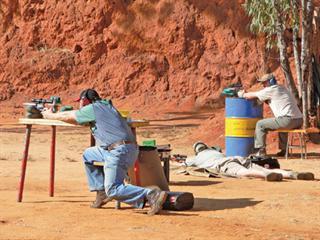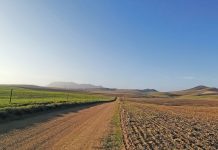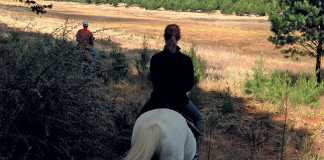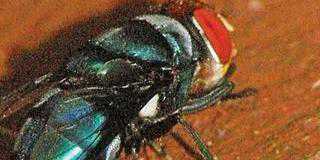
Ballistics is important to a hunter for very practical reasons.Knowledge of ballistics helps the hunter to ensure a one-shot kill and fulfil the first requirement of hunting ethics. Then too, the quarry animal is expensive and no hunter wishes to waste this investment.
A good hunter who learns about ballistics becomes a better one. He will be more discerning in his choice of ammunition, more practiced and therefore a better shot, and more confident in the knowledge of his own ability (and limitations!) and that of his firearm/ammunition combination.
This discussion is as applicable to the ballistics of store-bought, as to hand-loaded, ammunition. Internal ballistics is the study of what happens inside the firearm, from the moment the firing pin hits the primer until the bullet exits the muzzle – about one millisecond later – and is really of interest only to manufacturers of arms and ammunition, gunsmiths and cutting-edge hand-loaders.
External or flight ballistics – the study of a bullet’s path from the moment it exits the muzzle until the moment of impact with the target – is of scant interest to the short-range brush hunter. However, flight ballistics is of great interest to the long range plains hunter and target shooter, which every hunter should be. More about this later.
Terminal or wound ballistics tracks the course of the bullet from the moment of impact until it comes to a stop within the target animal, or exits it. A word of caution – although we have no interest in the bullet, once it has exited the target animal, we’re still responsible for whatever it does until it comes to a complete stop.
Reloading manuals provide a handy guide on flight ballistics for beginners. Make sure the manual has a section, usually at the back, with trajectory tables for various bullets. The manuals published by bullet manufacturers, for example Hornady and Speer, are especially good in this regard. They contain tables showing the trajectory of different bullets when launched from the muzzle at a wide range of velocities.
The first thing one learns when comparing the trajectory of various bullets is that pointed bullets have a flatter trajectory than round-nosed ones. A ‘boat-tail’ gives an even flatter trajectory and limits wind drift. These universal truths can seduce the beginner into the conclusion that a pointed boat-tail is a wise choice to make – it’s not. A compromise is often necessary, and we cannot always easily choose whether to select a bullet on its external ballistics or its terminal ballistics.
We learn early on that higher velocity means flatter trajectory. This makes bullet placement on a distant target easier, as the exact elevation of the barrel relative to the target is less critical. But higher velocity inevitably means higher pressure. Higher pressure within safe levels poses no problem, but on the limit it can become a dangerous problem.
Firstly the firearm is subjected to greater stress – something I, for one, am keen to avoid. Secondly, a high pressure load that was safe on a cool day on the range may easily produce 50% or higher pressure on a hot day in the field, where the cartridge may have been in the chamber, exposed to the hot sun all morning before being fired. And 50% over pressure can wreck an otherwise strong firearm, injuring or even killing the shooter.
The third caution regards the choice of bullet weight for the cartridge. You may, of course, use bullets falling outside the range of weights recommended for the cartridge. I did this for years for experimental purposes, and then finally came to the conclusion that the manual’s recommendations are, in fact, a shorter and cheaper route to greater success.
The published tables are a great source of information, allowing the amateur ballistician to compare and select the bullet ideal for his purpose. But he should not think that he has all the information he needs to predict where his bullet is going to hit at any particular range. He must work up his loads and, having done so and selected the load of his choice, he should shoot groups at various ranges, documenting the details.
He should record muzzle velocity, altitude above sea level, weather conditions, temperature, wind speed and direction, rifle zero range and mean point of impact, relative to the point aimed at, of each group at each range. Comparing this data to the published data for his bullet at his muzzle velocity will prove illuminating. Using the published tables and the correction factor should make his theoretical forecasts at other ranges pretty accurate. The feeling of achievement from having done this is worth experiencing.
Finally, terminal or wound ballistics. A bullet perfectly delivered right on target is just no good if it does not kill the animal outright. The hunter is at fault if a second shot is needed. If the animal was hit correctly but was not killed outright, it was the bullet’s fault, right? Wrong. It was the hunter’s fault, because he selected the bullet and he decided that the shot was right for his bullet.
How do we avoid such errors? The short answer is, by selecting the right bullet for the job at hand. This is a subject for a series of articles, but here are the basics:
Every soft-nosed, expanding or deforming bullet has a range of impact (not muzzle) velocities – the ‘bullet-speed’ when it arrives at the target – within which it will perform as it should. At velocities below that range it will act like a solid, and at velocities above that range it will break up prematurely. The following information is based on two things – my experience and that of others, and my preferences. And let me admit – I prefer a bullet that holds together to one that falls apart!
- Up to 600fps (feet per second): bullets cast or swaged from pure lead.
- 600 to 1 600fps: bullets cast from lead alloys.
- 1 600 to 2 100fps: standard grade jacketed soft point bullets.
- Above 2 100fps: premium grade expanding bullets, preferably monometal – those not containing lead – especially for higher velocities.
Solid or full metal jacket bullets are usually not very velocity-sensitive, but there are exceptions. Now, as an exercise – go out and record those impact points at various ranges – say 100m, 200m and 300m, and start comparing with the tables!
Contact Field Sports writers on 083 235 4822 or at [email protected]













